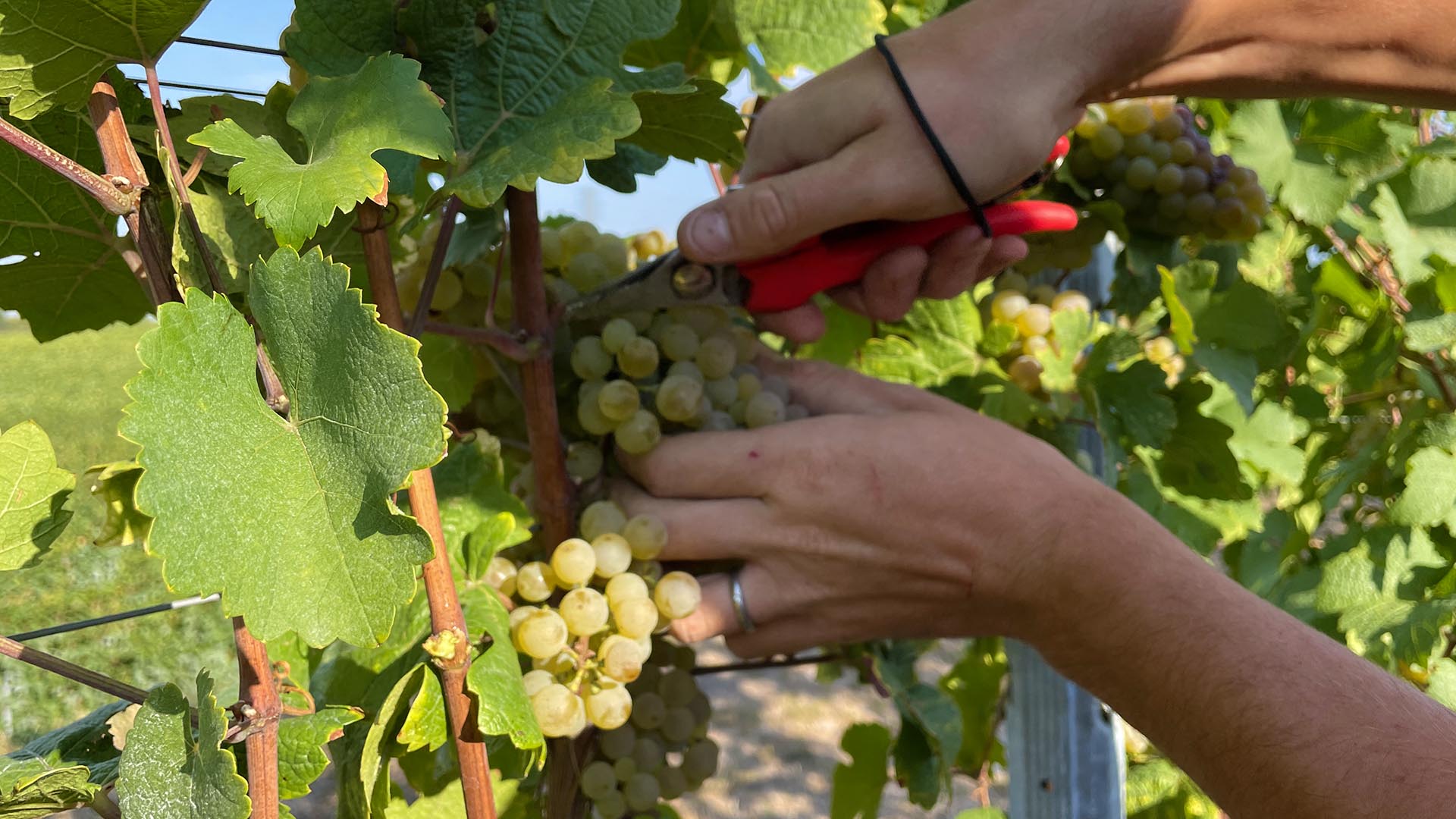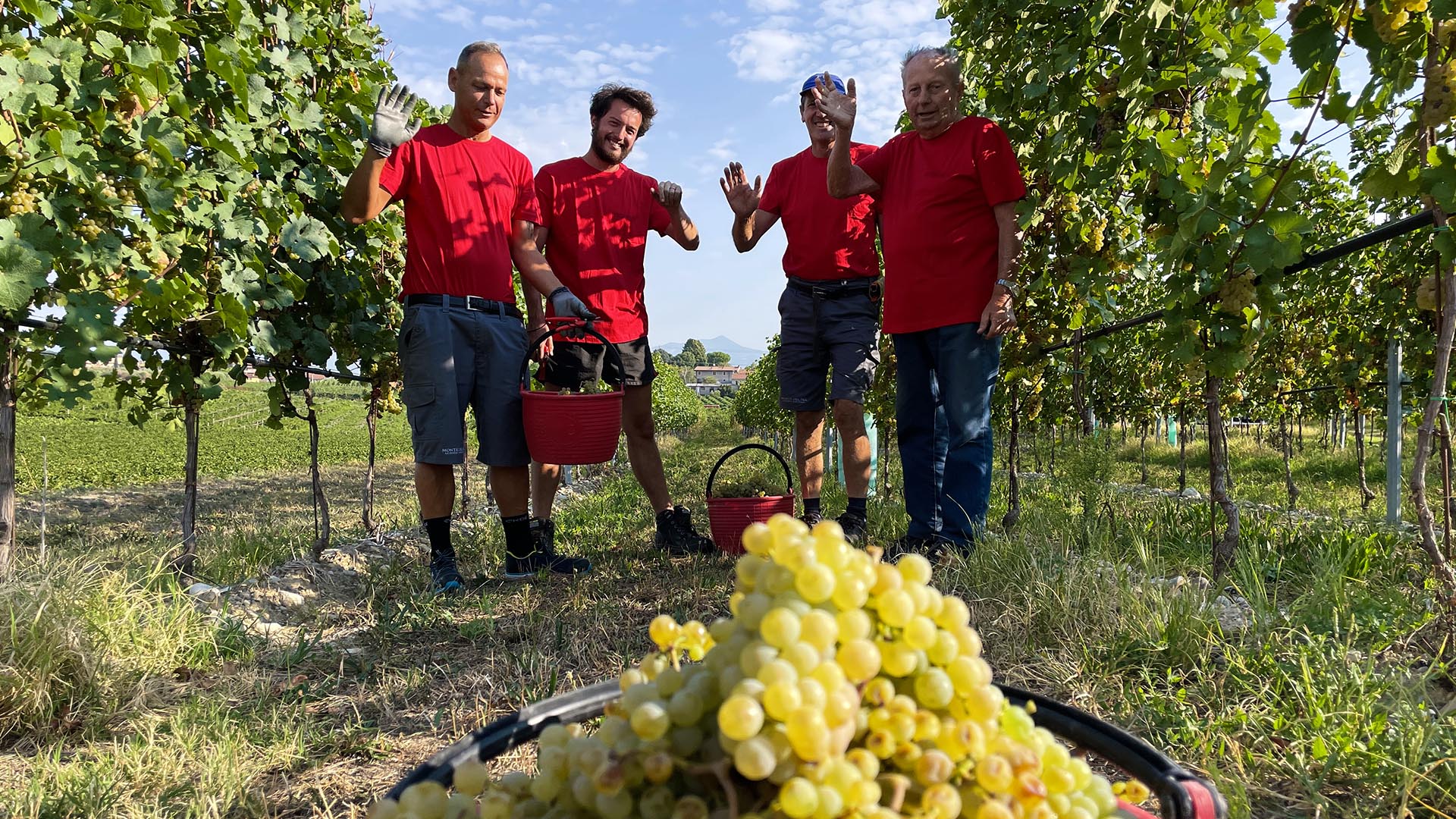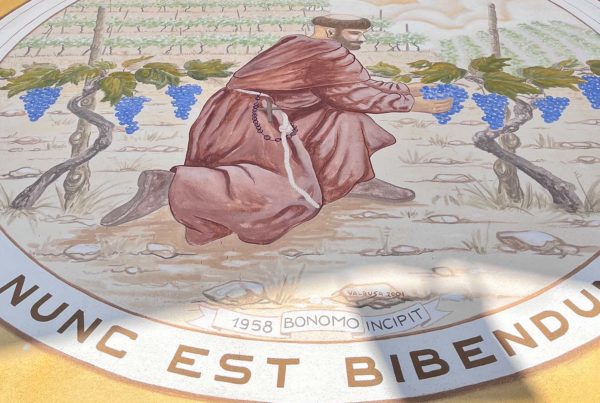Passione, ottimismo verso il futuro e rispetto dei ritmi naturali della vite: i valori che stanno alla base della vendemmia 2021 Monte del Frà.
Anche quest’anno la vendemmia è terminata, e per lo staff Monte del Frà si conclude un percorso denso di significato: la fine di un ciclo e l’inizio di un altro. Si esaurisce infatti la fase del duro lavoro nel vigneto e la squadra si appresta a cominciare quello in cantina. Ma cosa è successo negli ultimi otto mesi nei vigneti di Custoza, Bardolino e Valpolicella Monte del Frà?
I mesi precedenti alla vendemmia sono stati caratterizzati da eventi climatici che hanno generato molta apprensione, in particolare la grandinata avvenuta ad Aprile che ha riguardato alcuni appezzamenti della cantina. Durante questa fase la quantità delle uve è stata decurtata ma la vite ha avuto la forza di reagire.
Ad Agosto si è assistito poi ad un ritardo nello sviluppo vegetativo, cominciato in ritardo a causa di un’estate non caldissima. Ma grazie a giornate limpide e notti fresche la vite ha recuperato il tempo di maturazione accelerando la crescita. L’invaiatura ha beneficiato del clima asciutto e caldo e di una buona escursione termica tra il giorno e la notte.
Le prime varietà ad arrivare in cantina sono state le uve bianche precoci quali Chardonnay, Pinot Bianco, Sauvignon Blanc e Incrocio Manzoni. Poi, a partire dalla seconda metà di Settembre sono state raccolte in successione le uve Trebbianello (biotipo locale del Tocai/Tai), Bianca Fernanda (clone locale del Cortese) e Garganega principali varietà per i vini Custoza DOC e Custoza Superiore Cà del Magro DOC.

Tutto il periodo è stato caratterizzato da un clima molto favorevole, segnato da giornate soleggiate alternate a nottate fresche che hanno favorito l’accumulo dei precursori aromatici delle uve: carattere che si potenzia particolarmente in presenza di escursioni termiche.
La pioggia del 5 e 6 Ottobre ha segnato una breve interruzione dell’equilibrio climatico che non ha però intaccato la qualità. Le condizioni atmosferiche si sono infatti ristabilite velocemente permettendo la continuità di giornate soleggiate alternate da notti fredde.
L’escursione termica ha inoltre giovato maggiormente all’uva Garganega, che ha maturato lentamente fino a metà Ottobre incrementando struttura e ricchezza nei tipici profumi di glicine, ginestra, rosa e acacia.La quantità raccolta è stata inferiore alla media ma la qualità delle uve è stata eccellente
Per quanto riguarda la raccolta delle uve Corvina e Rondinella destinate alla produzione del vino Bardolino, compiuta nella zona sud-est del Lago di Garda ha goduto di un clima ottimale tra Settembre e Ottobre; una buona maturazione delle bucce ha permesso un’eccellente maturazione dei tannini e degli antociani, regalando mosti equilibrati con buona struttura e alcolicità.
Nel frattempo si è conclusa anche la raccolta negli appezzamenti in Valpolicella, dove le uve destinate al vino Amarone DOCG (Corvina, Corvinone e Rondinella) sono state adagiate nei plateau per riposare per cominciare la fase di appassimento. Qui, la raccolta, cominciata a metà Settembre, si è protratta fino al 10 Ottobre.
Il fruttaio con le uve in appassimento è oggetto di un continuo metodico controllo dell’umidità e della ventilazione, sfruttando le particolari condizioni climatiche naturali del territorio della Valpolicella che in autunno si caratterizza per brezze notturne costanti e asciutte e di clima anche freddo: una condizione importantissima per garantire un lento ed equilibrato appassimento che aiuta lo sviluppo della parte aromatica delle uve.
“Il team di vigna e cantina è veramente straordinario: energia, passione sono il leit motiv aziendale” spiega la titolare Marica Bonomo. “I risultati ottenuti sono anche merito di una squadra affiatata che si impegna tutti i giorni per produrre vini di qualità e rispettosi del nostro territorio”.
Ti potrebbe interessare anche: “Il vino Custoza” e “Vinibuoni D’Italia Premia Con La Corona Il Custoza DOC 2020 Monte Del Frà“




